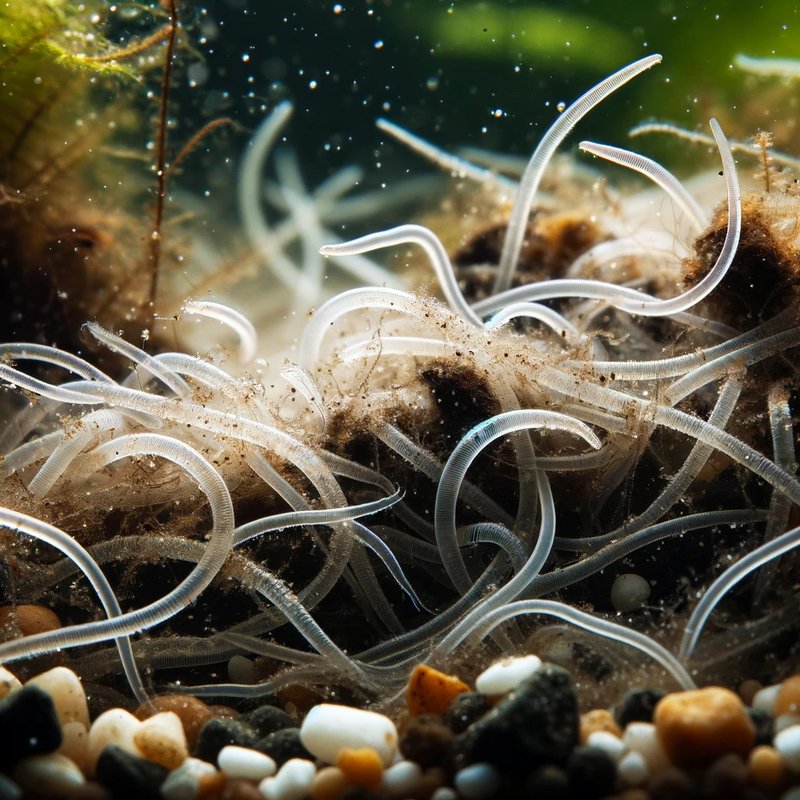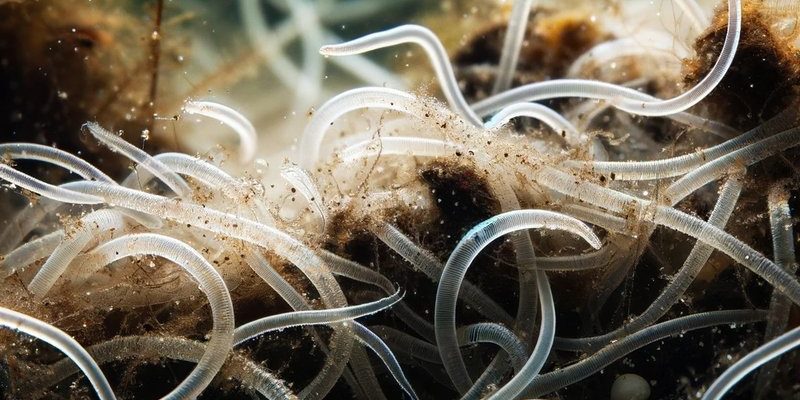
You might not think of an aquarium as a complex environment, but it can be a thriving community of creatures, some of which you may want to monitor closely. Tools like the AquaZoo Worm Detector, for instance, make this job easier by helping you pinpoint unseen worm activity. These gadgets are specially designed to detect movement, size, and even the type of worms that might be invading your watery paradise. Let’s dive into the various aquarium gear options to help you keep a watchful eye on your aquatic friends.
Why Detect Hidden Worms in Your Aquarium?
First off, you might be wondering, “Why bother checking for hidden worms in my aquarium?” Well, that’s a great question! Worms in your tank can often go unnoticed until they’ve multiplied to a point where they disrupt the balance of your ecosystem. Some species of worms can be beneficial, such as *detritivores*, which help break down organic material. But others can cause problems like overpopulation, leading to algae blooms or harming your fish.
Detecting these pesky critters early allows you to manage their populations before they create havoc. It’s like catching a small leak in your roof before it turns into a waterfall in your living room. Plus, knowing what you’re dealing with can help you choose the right treatments or interventions to keep your aquarium healthy.
Understanding Types of Aquarium Worms
Before we talk about the gear you can use, let’s get familiar with the types of worms that might be lurking in your tank. Here’s a quick overview:
- Brine Shrimp Worms: Also known as *sea monkeys*, these guys can be harmless but breed like crazy if not managed.
- Threadworms: Common in freshwater tanks, these worms can compete for food and cause stress to your fish.
- Planaria: These flatworms can be a nuisance, multiplying quickly and potentially harming your fish or plants.
Recognizing these types can help you decide what to look for when using detection gear. Some worms might not be harmful at all, while others could be detrimental. Understanding their characteristics can also guide you on how to react once you detect their presence.
Gear Options for Detecting Worms
Here’s where it gets interesting—various gadgets can help you detect worm activity in your aquarium. In addition to specific worm detectors, you might consider other observation tools. Here are a few notable options:
- AquaZoo Worm Detector: This handy gadget uses motion sensors to identify movement in your tank. It’s user-friendly and battery-operated, making it easy to set up.
- Underwater Camera: A remote-controlled underwater camera allows you to visually inspect hard-to-see areas of your aquarium. This can be fun and informative!
- Water Testing Kits: While not explicitly for worms, testing kits can help monitor water quality, which is crucial when dealing with pests.
These tools serve different purposes. Some are focused solely on detecting the movement of worms, while others offer a broader view of the aquatic environment, helping you assess overall tank health.
How Does a Worm Detector Work?
You might be curious about how something like the AquaZoo Worm Detector actually works. The basic principle is pretty straightforward. Most detectors contain motion sensors that are sensitive enough to catch even the tiniest movement in the water.
Once the device detects movement, it can signal you through a light or sound alert. Some models even sync up with your smartphone, providing real-time updates on any worm activity detected. Imagine getting a notification while you’re out running errands that lets you know something is amiss in your aquarium—it’s pretty high-tech!
Also, many of these devices are designed to be user-friendly. They typically come with simple instructions on how to set them up and calibrate them. Honestly, if you can pair a Bluetooth speaker, you can handle this!
Simple Troubleshooting for Aquarium Worm Detectors
Like any piece of technology, things can go wrong. However, troubleshooting is usually pretty simple. Here are some common issues you might encounter and how to tackle them:
- No Alerts: If your detector isn’t alerting you, check the battery. If it’s low, replace it and try again.
- False Alarms: Sometimes, smaller fish or water movements can trigger false alarms. Positioning your device in a less busy area of the tank might help.
- Calibration Issues: If the device isn’t detecting anything but you think it should be, try resetting it according to the instructions. This can help recalibrate the sensors.
Taking these steps can help ensure that your aquarium gear works effectively, allowing you to stay informed about what’s happening below the surface.
Choosing the Right Gear for Your Aquarium
When it comes to picking the right gear, there are a few factors to consider. Here’s what you should keep in mind:
- Size of Your Tank: Larger tanks might require more advanced detection systems, while smaller tanks can often be managed with simpler tools.
- Type of Fish and Plants: The species in your aquarium can affect how you approach monitoring worm activity. Some fish are more sensitive to disturbances.
- Your Budget: There are options at various price points, so it’s essential to choose one that fits your needs without breaking the bank.
In the end, understanding your aquarium’s unique ecosystem will guide you in selecting the best gear for monitoring hidden worm activity. Think of it as assembling a toolkit that helps you maintain harmony in your underwater world.
Detecting hidden worm activity in your aquarium might seem overwhelming at first, but with the right tools and knowledge, it can be an easy and even enjoyable part of aquarium care. Whether you invest in a dedicated worm detector or a multi-purpose monitoring tool, keeping a close eye on your tank will help you maintain a balanced aquatic environment.
Remember, the key is to be proactive rather than reactive. By staying informed about the activity in your aquarium, you can ensure a thriving habitat for your fish and plants. So grab that AquaZoo Worm Detector and start observing; you might just discover a whole new side to your underwater wonderland!

